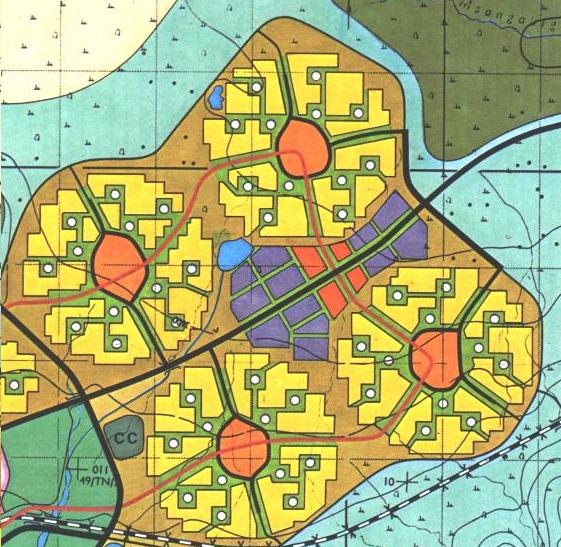A sustainable city is foremost an energy thrifty city with a minimum of energy used for transport. A good example is the 1976 master plan for Dodoma in Tanzania, an energy poor country, where planners were forced by circumstances to design a city with this objective in mind.
This is not your average subdivision. It is a community (28,000 population, 316 ha , 4 neighbourhoods with 1,400 dwelling units each) in which 50% of residents walk or cycle to their jobs in their own community centre, including offices and a light industrial area.
No building or structure is higher than 3 floors to save on power hungry escalators and lifts. 100% solar orientation and optimization of the use of prevailing winds for cooling in summer.
4 communities surround a city centre with the other half of the jobs. One ring line (bus or tram) and 2 radial lines would be sufficient as public transport. The total population would be 112 thousand, but that could easily be increased to 120K or even 160K (on a larger area). A pentagon shape could accommodate a maximum of 5 x 40K = 200K.
This is equivalent to one yearly immigration in-take at present levels. In other words, to sustainably accommodate immigrants, Australia would have to build 1 city of this type every year, preferably OUTSIDE the commuting distance of existing capital cities. But this is NOT being done. Instead we are adding more and more population to cities which are already now unsustainable.
Source: National Capital Master Plan, Dodoma, Tanzania; Project Planning Associates Ltd., Toronto, Canada and Capital Development Authority”, pages 42 and 46
Australia’s capital cities are far from being oil and energy efficient enough to go through the double crisis of peak oil and global warming without major changes in lifestyle of their population. These cities are likely to break apart into whatever survivable subcentres will emerge, held together by electric rail (if available). But even regional centres have become an urban sprawl replica of their larger counterparts so they are oil vulnerable, too.

